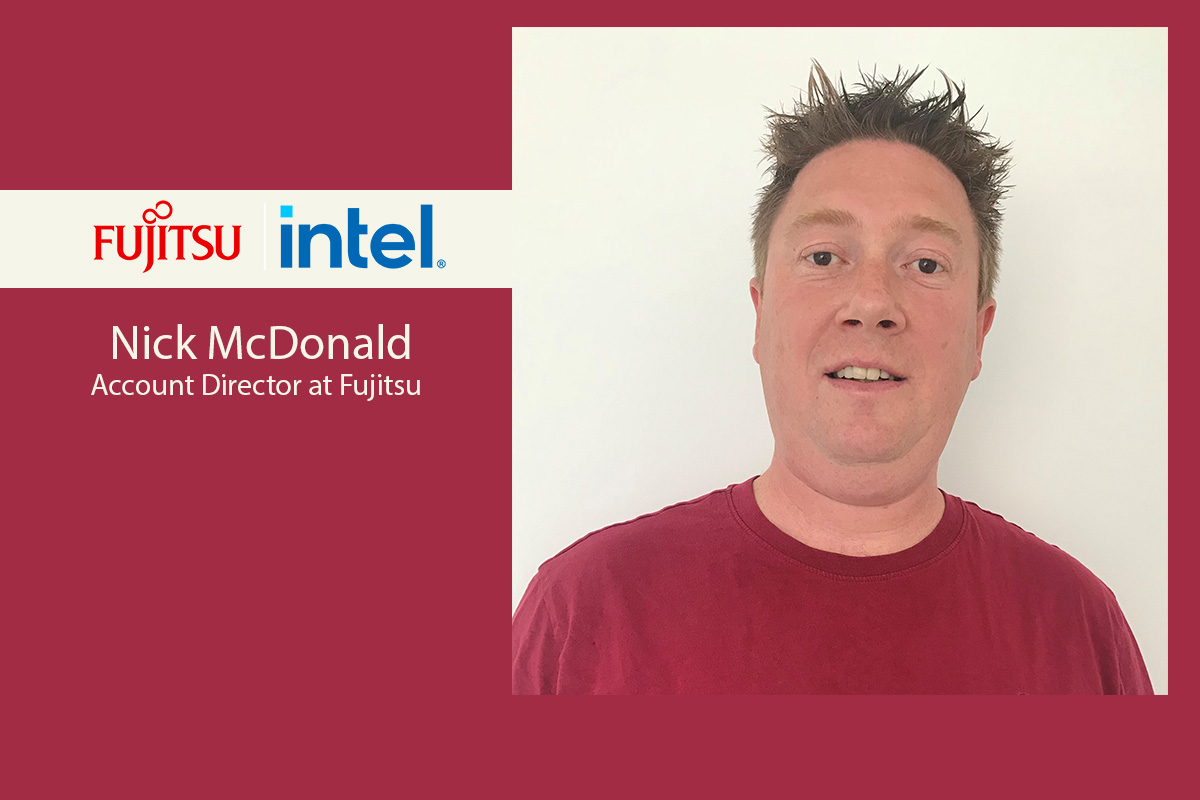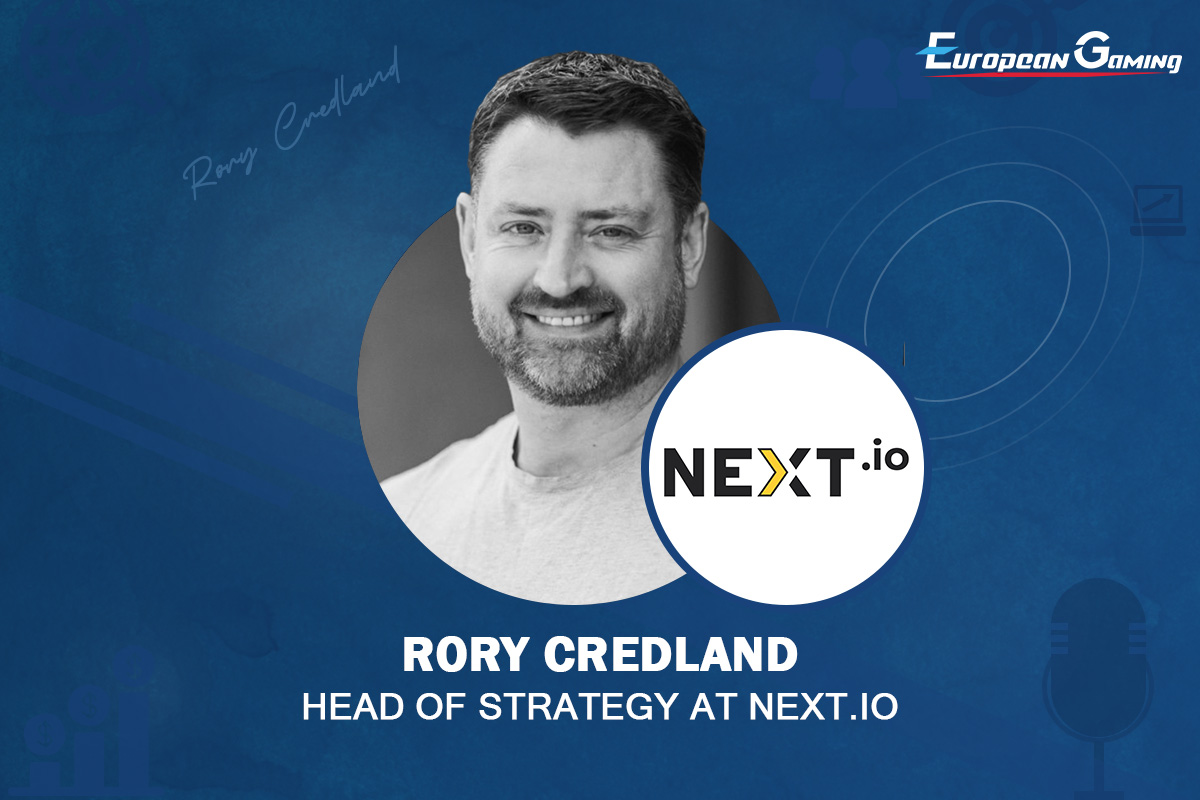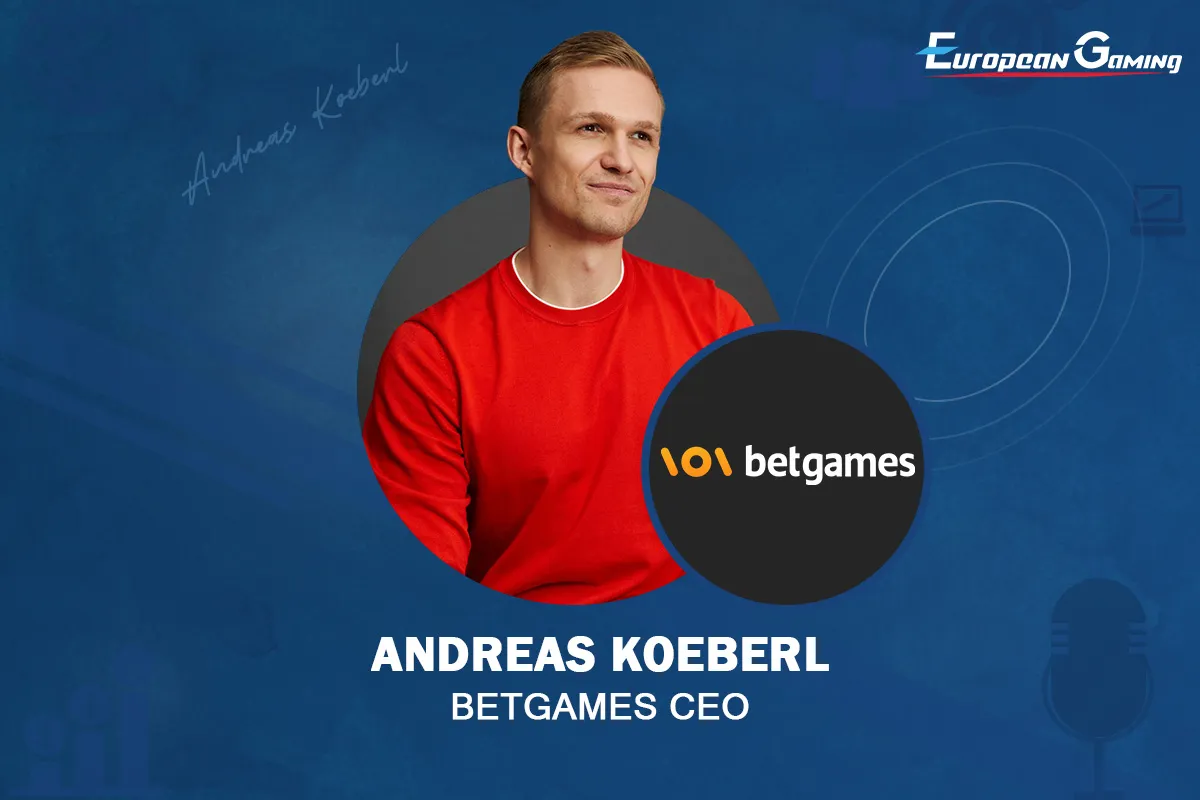Interviews
Exclusive Q&A w/ Nick McDonald, Account Director at Fujitsu

Can you introduce yourself and tell us about your role at Fujitsu?
My name is Nick McDonald, and I am an account director at Fujitsu focused on iGaming.
Can you tell us about Fujitsu and its background in iGaming?
Fujitsu has been working with customers globally in the iGaming industry for around 7 years. In that time, we have continued to grow and evolve our offerings in this space and can now provide and deliver iGaming technology solutions alongside our partners in over 100 territories. Our latest campaign is also being supported by Intel, one of the leading tech companies in the world, with their experience helping us to take our iGaming campaign to the next level.
Can you tell us more about the iGaming products that Fujitsu provides?
There are a number of different offerings we have in the iGaming space. Our core is manufacturing data centre technology, focusing on hybrid cloud, servers, storage, and similar technologies.
However, how we deploy and support these tailored to iGaming companies sets our products apart. One of our primary offerings is PRIMEFLEX. This tried and tested technology solution has helped customers change how they approach cloud and data storage.
One of our main goals is to assist customers on their Cloud journey. Many customers are in an area of Cloud Chaos right now, and we can help support them and work alongside them to help them navigate this and find new solutions in helping them choose the right cloud for the right workload.
We support this journey for iGaming customers by enabling them to utilise our Uscale offering. This allows customers to have their own on-premise technology infrastructure but consume it as a service, giving them the best of both worlds.
Your services to iGaming companies are largely based on data. Tell us about that
The amount of Data generated in the iGaming space is huge. We at Fujitsu, alongside Intel and our ecosystem of partners, can help iGaming companies by utilising skillsets and technology platforms to get the best value from that data and ensure any data generated is kept secure and compliant.
In terms of compliance and regulation, how can Fujitsu help iGaming companies?
Fujitsu, alongside our ecosystem and software partners, can stand up and support varying technology stacks in all regulated territories today. They can approach markets knowing they are backed up and supported by one of the largest global IT providers in the world.
Fujitsu is committed to sustainability, can you tell us more about that?
As a company, we have made a significant commitment to sustainability and have implemented various initiatives to address environmental and social challenges, The company’s sustainability vision is centred around the concept of ‘Human-centric Innovation’, aiming to leverage technology to create a more sustainable and prosperous society. Our partners must share this vision, which is why we work closely with Intel on our iGaming products.
Who are you currently working with in the iGaming industry?
We currently work with a handful of the largest platform providers in the iGaming space, and we have predominantly been focused on these for the past few years. We are now beginning to look for more customers to help in this space following the success we have seen with our products.
Why should iGaming companies choose Fujitsu?
One of the biggest reasons iGaming companies choose to work with Fujitsu is our flexibility. We do not have a one-size fits all approach with our technology. Instead, we work with a range of Hybrid and Cloud software vendors to help customers on their journey.
We also have a huge ecosystem of partners we can work with regarding delivery or hosting within territory backed up by support from Fujitsu, one of the world’s largest Global IT service delivery companies. We continue to be very people-centric and understand the need to pick up the phone and speak to someone about being able to deliver different forms of technology somewhere quickly.
Moving forward, how will you evolve your offering?
Fujitsu, with support from Intel, will continue to invest in our Hybrid Cloud offerings and our growth in the iGaming industry. AI will also be a big growth area for us, helping to create technology stacks and solutions for AI. We also want to ensure customers are looking at AI for the right reasons and delivering these solutions for the better.
eSports
eSports in the CIS region , Q&A w/ Viktor Block, Senior Sales Manager/PandaScore

Esports has long been popular in the CIS region, with various top-tier teams and players all calling it home. How has the landscape evolved over the last few years? Have any particular trends emerged that have surprised you at all?
Esports boomed in the CIS region in 2008 when Multiplayer Online Battle Arena (MOBA) games became really popular. While esports had been a thing as far back as 2003, the rise of games such as Counter-Strike and DOTA2 was a major catalyst for the upward trajectory the sector has been riding ever since. In recent years, the infrastructure needed to support esports has improved drastically across the CIS region, including the construction of the Pixel Esports Arena in Minks, Belarus, and the Cyberspace Arena in Almaty, Kazakhstan, both of which hold top-flight contests. Internet connectivity has also improved, while support from local and international sponsors such as Monster Energy, Red Bull and War Gaming have provided funds for further investment while also driving awareness. Ultimately, this has seen the landscape evolve into a thriving industry with lots of opportunities for further growth.
In terms of trends, and especially relating to esports betting, I’ve been surprised by the high demand for betting on console games – we call them eBattles and they include disciplines such as eSoccer and eBasketball. I think this is just a natural development that has occurred off the back of strong demand for video game content, which is often the bridge between traditional sports and esports.
What factors have contributed to esports’ growth in the CIS over the past few years?
One of the biggest factors for me is that teams have become more professional and are now training and playing in well-run clubs. This takes place in dedicated buildings and rooms, set up with high-speed internet and the absolute best gaming equipment. Player salaries have also gone up, which has increased the calibre of players taking part in contests across the region, taking competitiveness to the next level. Today, many CIS players now play for high-ranked teams such as Virtus.pro, Team Spirit, Betboom or Na`Vi which compete on the international stage. This in turn is helping esports grow across the CIS region.
Given how many countries are in the CIS region, can you walk us through some of the biggest regulatory differences when it comes to betting on esports? And how does PandaScore navigate these changes?
The legality of betting and esports betting differs from country to country within the CIS region. Some are super strict or even prohibit gambling, while others take a more liberal approach, regulating the activity and licensing operators. Let’s take a look at some of the biggest markets and their approach.
In Ukraine, esports has been recognised as a sport since 2018 and in 2020 the country regulated and licensed gambling for the first time. The law focuses mostly on standard betting – sports and casino – but is likely to also include esports betting given that esports is a recognised sport in the country with tier-one Ukraine sportsbooks like Favbet and Parimatch offering it to their players.
Kazakhstan has a growing gambling industry with betting shops and casinos operating in major cities such as Almaty and Nur-Sultan. Gambling is regulated by the Ministry of Culture and Sports and while the regulatory framework is somewhat restrictive, sports betting – which is likely to include esports betting – is permitted.
Navigating the constant changes in betting regulation across the CIS region can be challenging, so we make sure to keep up to speed with the latest developments by monitoring legislative updates and amendments to regulatory guidelines. We also track industry trends and best practices to anticipate regulatory changes ahead of time, allowing us to adapt quickly if needed. This can involve benchmarking against competitors, attending conferences and networking with key stakeholders.
In your view, are there any unique opportunities for the expansion of esports and esports betting within the CIS region? And how does this differ to other regions?
It’s important to understand that CIS, especially Ukraine and Kazakhstan, play by their own rules. By that I mean they are very different to other esports markets, so don’t think what works in Italy will work in Ukraine. For example, while League of Legends is very popular in Europe, in CIS, it’s Dota 2 that takes the top spot. But for those who can understand the region and each market, there are plenty of opportunities to explore.
Let me elaborate. Dota 2 is thriving in the broader CIS, with regular tournaments and events attracting large audiences both offline and online. teams like Natus Vincere (Na’Vi), Virtus.pro and Team Spirit have achieved significant success in Dota 2 competitions, contributing to the game’s popularity in the region. While Dota 2 is big, other video games also enjoy significant popularity, including CS2, World of Tanks and Fortnite among others.
Operators need to consider this when deciding their markets and odds, marketing strategies and plans for player engagement.
What would you say is the key to creating a successful esports product for a CIS audience?
Understanding layer preferences in each market and delivering an experience that exceeds their expectations. For the CIS region, this means focusing on Dota 2 – this is a game that offers deep and strategic gameplay requiring teamwork, communication and skilful execution of plans and strategies. Its competitive nature appeals to gamers as they enjoy the challenge of multiplayer experiences – this goes back to the original MOBAs back in 2008. These factors must be present in the esports betting experience offered to players – at PandaScore, this means a comprehensive Dota 2 offering that covers markets such as Kills, Towers, Roshans and Barracks, with players able to challenge themselves in a betting competition against others.
Support is also key to delivering a quality player experience. We offer round-the-clock assistance and are regularly rolling out updates to improve the experience players receive when betting on esports at sportsbooks using our data, odds and betting tools such as our Bet Builder. We are always working hard to expand our offering to cover the most in-demand games including CS2, Valorant, Call of Duty and many more.
What trends or developments do you anticipate shaping the future growth of esports in the CIS region over the next few years?
The industry will continue to grow and become more professional. Esports is different to traditional sports and it still lacks recognition in some markets, even though it is considered an official sport in a growing number of countries across the CIS region. I think as it evolves, more governments will provide more support for esports as it brings tremendous economic, cultural and social benefits. This could include funding for esports initiatives, rolling out regulatory frameworks, helping to foster partnerships with esports organisations or simply recognising it as a sport.
The continued proliferation of smartphones across the region will be a further catalyst for esports growth. Titles such as PUGB Mobile, Free Fire and Mobile Legends: Bang Bang will attract large audiences and provide new opportunities for teams, players, sponsors and other stakeholders to explore. This is a really exciting time for esports and esports betting in the CIS region, and PandaScore is thrilled to be part of it.
Interviews
Exclusive Q&A w/ Rory Credland, Head of Strategy at Next.io

- Could you provide an overview of the upcoming Next.io summit in May?
We are hosting our 4th annual NEXT.io event in Valletta on 15 – 16 May. With a global delegation of 5,000 attendees, Valletta’24 is more than just a conference; it’s where groundbreaking ideas and innovations converge. In addition to the leadership stage, we host several side tracks on marketing, investment, HR, sustainability, technology, emerging markets/jurisdictions – plus a new track on personal development. As we expect over 5,000 attendees, we have also increased our networking space with a new hall dedicated to more exhibitors, entertainment area, lunch, and a chill-out zone. Finally, our recent partnership with Ask Gamblers will ensure greater affiliates and operators in attendance, so as you can see there is definitely something for everyone and the event promises to be one of endless connections and activities.

- What speakers or panelists can attendees expect to hear from during the summit?
We have tailored the event to make this event the pinnacle of the iGaming industry, offering unparalleled networking opportunities and insights from 300 industry-leading voices. We have many c-level speakers attending including Angus Nisbet, VP Gaming, BetMGM, gaming industry expert Paris Smith, Lahcene Merzoug, CEO. PressEnter, Francesco Postiglione, CEO, Casumo, Martina Akerlund, CEO, CallsU, Jeffrey Haas, Chief Growth Officer, William Hill, Todd Haushalter, CPO, Evolution Group, Tim Heath, General Partner, Yolo Investments plus an amazing keynote to kick off the start the event. We have two amazing keynotes to kick-start day 1 and 2 of the event, so I urge you to check out our agenda via
- Can you share any insights into the format of sessions and discussions planned for the summit?
We like to change the formats and concepts up at NEXT.io compared to the norm that you see at other organisers. For instance, we base our talks at 30mins max to ensure that it is short and sharp straight to the point discussions and a limited number of speakers on each session so that more interactive discussion and debate can be had. We also are putting the CEOs under the spotlight this year – think Mastermind – with each CEO – one by one – under a “spotlight” for 10mins with direct questioning from the host. Should be awesome and insightful.
- How does Next.io ensure diversity and inclusivity in the selection of speakers and participants for its summits?
Internally we take an active stance to ensure that there is a cross selection of speakers to this regard based on our own internal metrics. Wherever possible we encourage new speakers to be put forward by their organisations or through connections that we make – this allows for new and different perspectives on the discussion to hand which make the event and tracks interesting and informative for the audience.
- What unique networking or collaboration opportunities will be available to participants during the event?
For two years ago we have designed NEXT.io Valletta to be a festival week of iGaming, encouraging people to arrive for the week to take part in our activities we have on the Monday and Tuesday before attending the event on Wednesday. This year we have Golf, Padel, Run Club plus many networking events taking place from Tuesday through to Friday night, so check out the website where you will be able to find more information.
- How does Next.io leverage technology or innovation to enhance the summit experience for attendees, whether in-person or virtual?
We have a unique advantage hosting the event at the MCC in that the main stage is built like a theatre – so with use of such a big stage we can use LED screens which allow for animation and interaction on screen as well as several attendee applications which ensures they get directly involved with what session is taking place and have an input into the direction of the questioning.
- What motivated Next.io to choose Malta as the location?
NEXT.io head office is based in Malta, so it felt a natural fit to organise our flagship event within the country and at one of Malta’s iconic venues – The Mediterranean Conference Centre – with epic views over the harbour and Mediterranean Sea. When NEXT.io was formed the company had amazing support from the Maltese Gaming Authority who backed us at the time and so since day one we continue to use Malta to host what we feel is becoming an event on everyone’s calendars.
- How does Next.io ensure that its summits provide a platform for emerging voices and perspectives alongside established leaders and experts?
As mentioned previously we like to continuously promote not only the established experts but also the leaders of tomorrow. Our Advisory Board is instrumental in that regards as they also have an ear to the ground as to whom is best to suggest for topics and discussions. I think what works best is a mix of experience and new to crate that interesting discussion on stage.
- How does Next.io plan to capture and share the insights and outcomes from the Malta summit to extend its impact beyond the event itself?
We record our main stage sessions and use this through our awesome marketing to promote the event long after it is over via access on our news part of the website. In fact, we never see an event having an “end” more of a continuation to the next show as we promote what was and what is new for the following year. Continuous dialogue with our audience and clients is important to ensure consistent messaging and allows us to react to what market forces are in play at the time.
Interviews
BetGames Classic roulette launch w/ Andreas Koeberl, CEO

You’ve just launched your own spin on the casino classic roulette – what prompted this move and why now?
AK: Our mission is to help our partners convert their recreational punters into casino players, organically, resulting in lower CPAs and higher retention rates. In practice, this means instead of throwing massive bonuses at your players, you use a curated set of games, features and targeted bonuses at a way lower cost. We already deliver the initial part of this journey and have now added arguably the most classic game of all time to ensure we don’t lose those players to the competition.
Some may consider such a launch as brave given how saturated the market is with versions of the game – how have you built the trademark BetGames DNA into your version?
AK: The products we launch are all key parts of the puzzle to convert bettors to casino, rather than being efforts to attack the big established brands in the market. Roulette is a commodity and what’s the point of entering a price war we can’t win due to lower scale? The crucial focus is the player conversion journey and a seamless experience – not having to switch lobbies and staying with the supplier you trust. We didn’t reinvent the wheel, so to speak! I don’t think the fancy studios with robot arms and seven different cameras add any value in our core markets. We focused on a slick player experience with a professional presenter quality. We have kept it simple and targeted.
Do you have certain markets in mind for this latest launch? Are we seeing RNG table games surge in popularity in LatAm, for example?
AK: We’re focusing on our existing markets and LatAm initially. This is one reason why we launched the game without a continuous stream during the placing of bets, reducing data consumption. What we have learned from some of our existing games, and certainly from our most popular examples, is that our players (who are generally more sports savvy) enjoy silence and focus during betting. Thus, we have top-notch quality presentation during the spin but a quiet, slick betting experience during the dwell time. This helps to save players’ data, particularly in markets where developing infrastructures are a challenge. LatAm isn’t very developed yet with live content, and one of the main reasons for that is partly poor infrastructure. Quick, data-light products like RNG games remain popular because of that.
You’ve seen a lot of success in LatAm and Africa – are the requirements of developing markets hugely different to those of the more established when you are developing products?
AK: Africa is special because it is an extremely superstitious market – trust and ease of use are everything. LatAm is more demanding on the localisation front. People want Brazilian Portuguese or Latin Spanish, even though they often play games muted – this makes it tricky. From a live perspective, both markets are still in their infancy. RNG develops quicker, but still has huge potential. We will see what the new regulations in areas such as Brazil, Peru and Chile will bring in terms of market development.
Is the widening of your product portfolio indicative of a long-term shift of focus for BetGames? Will we see more of your more traditional lottery and card-based games?
AK: We follow a niche strategy and want to add incremental value for our partners. We have seen a lot of new competitors entering the live dealer space aiming to take on the likes of Evolution, Playtech and Pragmatic Play. Most of them failed or at least experienced a hard landing in terms of commercial success. The big players, especially Pragmatic and Evolution have massive scale, giving them significant competitive advantages, which lots of smaller or new studios often underestimate. A 24/7 live operation comes with enormous challenges and OPEX and the rev shares on commodities like roulette are getting smaller and smaller. So, we will stick to our mission and USP. If a partner wants a roulette environment, we are capable of delivering, but it needs to make sense. Hence, we aren’t neglecting our core to become a supplier of roulette and blackjack specifically.
We’ve grown our portfolio over the years to accommodate constantly shifting player trends and technology and will continue to do so, remaining agile, relevant and making informed decisions on a product offering that suits global markets.
-

 Conferences in Europe7 days ago
Conferences in Europe7 days agoSpanish Advertising Restrictions Struck Down: Learn More at the 2024 Gaming in Spain Conference
-

 Balkans7 days ago
Balkans7 days agoMaking a Bang in Bulgaria! Hacksaw Gaming goes live with Alphawin
-

 eSports7 days ago
eSports7 days agoCopenhagen Major 2024 – Betting Overview
-

 Compliance Updates7 days ago
Compliance Updates7 days agoIOC and UEFA host joint betting integrity workshop
-

 Latest News7 days ago
Latest News7 days agoWeek 15/2024 slot games releases
-

 Gaming7 days ago
Gaming7 days agoSortium Revolutionizing Video Game Development with Groundbreaking AI Tools Launch and $4 Million+ Funding Round
-

 Compliance Updates4 days ago
Compliance Updates4 days agoBet on Compliance: Navigating the Stakes with the UK’s Affordability Checks
-

 Latest News7 days ago
Latest News7 days agoCasinoBeats Game Developer Awards 2024 Shortlists Announced






















































